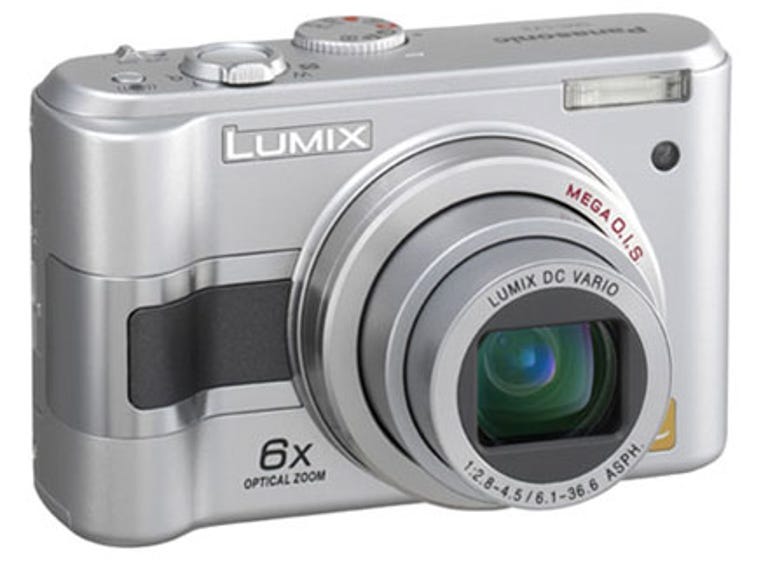 Why You Can Trust CNET
Why You Can Trust CNET Panasonic Lumix DMC-LZ3 review: Panasonic Lumix DMC-LZ3
Lacklustre image quality and poor performance make the Panasonic Lumix DMC-LZ3 a disappointment.
The Panasonic Lumix DMC-LZ3 sits at the bottom of Panasonic's line of midrange, 6X-zoom point-and-shoot cameras; its 5-megapixel resolution and smaller screen are all that separate it from its more expensive 6-megapixel sibling, the Panasonic Lumix DMC-LZ5. Both incorporate the same 37mm-to-222mm (35mm-equivalent) Leica lens, optical image stabilisation, and numerous ways to control image capture. The DMC-LZ3 fares moderately well in bright environments, but poor performance and average photo quality lessen the allure of this attractively priced model.
The DMC-LZ3 is physically identical to the LZ5. It shares the same compact plastic body and button scheme as those of its bigger brother: control pad on the back; mode dial, power switch, zoom rocker, and image stabilisation button on the top. The DMC-LZ3's LCD measures a scant two inches compared to the DMC-LZ5's 2.5-inch screen. Since both cameras use the same body mould, the DMC-LZ3's LCD looks smaller than usual against its 2.5-inch bezel.
The DMC-LZ3's 37mm-to-222mm-equivalent Leica lens with Panasonic's Mega Optical Image Stabilization is its most prominent feature. Like the DMC-LZ5, it offers 15 scene presets, including a long-exposure Starry Sky mode for astrophotography. The DMC-LZ3 also has 14MB of built-in memory, the same as the DMC-LZ5.
Unfortunately, the Panasonic Lumix DMC-LZ3's performance is as lacklustre as the DMC-LZ5's, as well. With a full second shutter lag and a flash-recycle time of 4.5 seconds, the DMC-LZ3 makes a poor choice for quick action shots. In burst-shooting mode, the DMC-LZ3 delivered an impressive 2.7fps but for only a meagre three shot burst.
Image quality proves equally disappointing, with noticeable noise and chromatic aberration even at the lowest ISO settings. Specks and blurs fill the image and purple fringing appears on object edges far too often. Even shots taken at ISO 80 are so noisy that the compression algorithm creates large colour-shifted areas, and edges become visibly jagged. Noticeable vignetting starts to appear along the corners at the wider end of the lens, but that's not surprising for a high-zoom compact snapshot camera.
Panasonic's Lumix DMC-LZ3 is seriously hurt by disappointing performance and extremely noisy images. Its features make it a decent budget high-zoom camera, but don't count on it for decent photos when the lights are low.
The Good
The Bad
The Bottom Line
(Shorter bars indicate better performance)
| Typical shot-to-shot time | Time to first shot | Shutter lag (typical) |
(Longer bars indicate better performance)
NOTE: Products in this test are for comparative purposes only and are not necessarily available in the Australian market.
